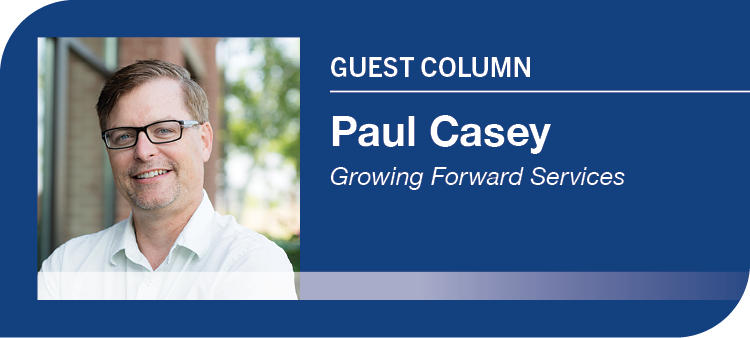
Home » Professional communication is an art that needs practicing
Professional communication is an art that needs practicing

July 12, 2023
Have you disagreed with people at work? Maybe they only see a problem or situation one way and can’t persuade you to see the problem from their perspective.
This can stir up many different responses. People have a strong desire to “be right” and to ultimately prove the other person wrong. You might even go along with them to avoid an uncomfortable argument.
Sharing how you think and feel when it differs from another person can feel scary and frustrating. However, while you avoid the discomfort of a disagreement, you can lose yourself in the process.
Disagreements and conflict don’t have to result in a poor experience. In fact, they can often be a great way to learn something new about a person or topic, develop understanding and deepen relationships.
So, you decide to confront the individual. Now what?
Fight the urge to rush in and blast the person whose words rubbed you the wrong way. Adding fuel to the fire hurts the relationship and lowers your credibility.
When someone is confronting you, it’s easy to respond defensively. However, this escalates the conflict. Try the “LEAD formula” for deescalating the situation, bringing a bucket of water to the fire instead of a bucket of gasoline.
Listen
The “L” in the formula’s acronym stands for “listen.” Typically, other people get angry because their goal has been blocked, and they see you as the one blocking it.
If they’re an introvert, they have been storing up their venom for a while and are ready to unload.
If they’re an extrovert, there may be no filter at all.
Either way, the person needs to vent, without interruption and to their satisfaction. It’s your job to listen actively, even though every bone in your body wants to lash back at this perceived attack.
Listen without interruption. Use open body language to show you are interested in their concerns. If you want to be disarming, ask questions to clarify or confirm what they are saying. Don’t use statements. I have found a third of the negative emotions diffuse if you listen well. He or she feels you understand where they’re coming from.
Empathize
“E” is for “empathize.” When it’s time to speak, the first words out of your mouth need to be from the perspective of the other person.
In other words, you put on their glasses and look at the issue from their vantage point. This response (not reaction!) demonstrates you are seeking to understand before being understood (a habit of highly effective people). Use phrases like:
“It must have been difficult for you to hear...”
“I would have been irritated, too, if I thought that…”
By trying to feel their pain, it diffuses more hostile emotion.
Apologize
“A” is for “apologize.” This may not apply if you truly have done nothing wrong, but if you share even 1% of the blame, you should apologize. Sincerely. And ask for forgiveness. That last sentence tends to melt people’s hearts. It takes the final bit of negative emotion and turns it into fodder for resolution.
Often, when I’ve done this, the other person also apologizes, or backs down, realizing they might have blown the issue out of proportion. It’s hard to keep arguing with someone who becomes vulnerable and selfless.
Discuss
“D” is for “discuss.” It’s dialogue time. If you have done this correctly, the stage has been set for effective communication. It’s now a respectful atmosphere to focus on solutions and what you can do to prevent this from happening again. Give and take can occur. And both parties can leave the table with a win-win outcome, which should be confirmed by each person to assure comprehension.
In many cases, these simple approaches create a path to conflict resolution. However, you also must know when to fold ’em.
Not every conflict or disagreement is resolvable. There are times when backing off is the right move to continue the relationship or because the stakes are low. Agreeing to disagree, with grace, shows the character of letting things go and not allowing bitterness to creep in.
Conflict isn’t fun for most of us. But it can lead to a stronger relationship on the other side of it – if you choose the high road and stay mature and constructive, and not take it personally.
Paul D. Casey lives in the Tri-Cities and is the owner of Growing Forward Services, which aims to equip and coach leaders and teams to spark breakthrough success.
Opinion
KEYWORDS july 2023





